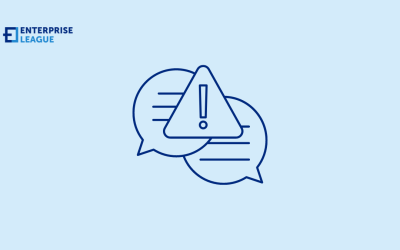Tackling the ever-evolving maze of medical billing is a critical task that healthcare providers must master to ensure their practice thrives. From deciphering complex coding systems to managing patient collections, the obstacles ahead of you can appear daunting.
This article will serve as your compass through 10 challenges you’ll face in medical billing, offering actionable advice and solutions. Whether you’re a professional or a newbie, these insights will empower you to navigate with confidence and keep your workflow compliant.
The importance of improving your medical billing process
Most healthcare professionals can admit that their medical billing process could use some work, but is there any benefit to tackling these challenges and improving your business strategy?
Optimizing your medical billing process is far more than a clerical concern. It’s a vital component of your practice’s sustainability, regardless of your location, specialty, or business age. By enhancing this process, you ensure accurate reimbursements, maintain compliance with evolving regulations, and improve patient satisfaction through transparent billing practices.
An efficient system also facilitates quicker payments, reducing the financial pressure on your practice. In short, taking steps to improve your medical billing can lead to a healthier bottom line and allow you to focus more on patient care rather than administrative headaches.
10 challenges of medical billing and how to navigate them
Navigating the complexities of medical billing is fraught with challenges. This guide delves into ten common hurdles you might encounter and provides practical strategies for handling them.
Outdated or no billing software
Navigating medical billing without updated software can be a nightmare. It’s akin to walking through a maze blindfolded. For practices like podiatry (foot and ankle doctors), where specifics matter, using an up-to-date podiatry EMR (electronic medical record) system is essential.
This software isn’t just about keeping records. It streamlines the entire billing process, ensuring you stay compliant with current codes and regulations. Don’t get left behind with antiquated methods or no software at all. Instead, upgrade your tools, improve accuracy, and save time.
Coding errors
Coding errors are a costly pitfall, often leading to claim rejections or denials. To navigate this challenge, you need a twofold strategy: continuous education and attention to detail. Stay current on the latest ICD-10 updates and CPT code changes by attending workshops.
Implement rigorous checks within your medical billing process to catch mistakes before claims are actually submitted. Remember that accurate coding is the lifeline of revenue for your medical practice. It’s worth investing the time and resources to get it right every time.
Denied claims
Facing a denied claim can be disheartening, but it’s a reality in the world of medical billing. Rather than accepting defeat, view each denial as an opportunity to bolster your approach.
Carefully analyze the explanation of benefits (EOB) to understand the reasons for denial, then promptly address fixable issues and resubmit claims when necessary. Implementing a proactive auditing system can also help you identify patterns that lead to denials, allowing you to correct these issues moving forward and increase the chances of first-pass claim acceptance.
Changing regulations
The landscape of medical billing is ever-evolving with changing regulations that can upend your established processes. Staying up to date with new healthcare laws, coding updates, and payer policies is crucial for maintaining compliance and safeguarding business revenue.
You can navigate these choppy waters by subscribing to industry newsletters, joining professional organizations, and attending relevant training sessions. By staying informed, you can adjust your billing practices proactively instead of reacting to issues after the fact.
Patient eligibility
Verifying patient eligibility is an essential step in the medical billing process. It prevents uncomfortable situations where patients receive services they assumed were covered, only to discover their plan doesn’t cover them, leading to unpaid bills and headaches for your practice.
To navigate this, invest in a streamlined verification system or train your staff to conduct thorough checks prior to every appointment. Frequent re-verification can also catch changes in coverage early on, saving time and reducing financial risk for the patient and healthcare facility.
Inadequate documentation
Inadequate documentation can spell disaster for medical billing, as it’s often the root cause of rejected or denied claims. Clear and comprehensive clinical documentation not only supports the necessity of services rendered but also ensures that you’re compensated accurately.
To dodge this pitfall, encourage your healthcare providers to be thorough in their record-keeping, detailing every procedure and diagnosis with precision, ideally through an EMR. Employ regular training sessions to emphasize the importance of this practice.
Underpayment
Underpayment is a subtle yet pervasive issue that can erode your practice’s earnings. It occurs when reimbursements from payers fall short of the contracted rate, often slipping by unnoticed by your staff. To tackle this, regular reviews of remittance advice statements are vital.
Compare these against your managed care contracts to spot inconsistencies or discrepancies. If underpayments are detected, appeal to the payer with detailed documentation in hand. Vigilance and persistence can help ensure you receive the total amount on each bill.
Slow payment
The sluggish pace of payment can dampen your practice’s cash flow. To combat this, it’s critical to refine your billing cycle and shorten the turnaround time for claims submissions.
Embracing electronic billing systems is one effective way to expedite the process, as they reduce manual entry errors and ensure timely filing. Stay proactive by regularly following up with payers on the status of submitted claims and promptly addressing any issues they highlight. This persistence helps maintain momentum in the payments coming into your practice.
Manage patient collections
Effective management of patient collections is vital to maintaining a healthy revenue cycle. As high deductible healthcare plans become more common, patients are often responsible for a large portion of their costs, making clear communication about financial responsibility crucial.
It’s important to establish transparent billing policies and discuss payment expectations upfront before the patient’s first appointment. Provide flexible payment options when possible and consider implementing automated reminder systems to encourage timely patient payments.
Stressful audits
Monthly and yearly audits are a daunting aspect of medical billing in the healthcare industry, but they don’t have to induce stress if you’re well-prepared. Keep your billing practices clean and audit-ready by maintaining impeccable documentation and adherence to coding standards.
Conducting regular internal audits can help catch and rectify errors before an external auditor knocks on your door. This habit not only eases the anxiety surrounding audits but also supports the overall integrity of your billing process. Having peace of mind is definitely worth the effort.
Conclusion
As you forge ahead in the intricate world of medical billing, remember that each challenge presents a chance to refine and enhance your processes. Embrace these opportunities to grow and adapt, ensuring your practice’s financial vigor and patient trust remain strong.
Don’t let the hurdles deter you—equip yourself with knowledge, stay proactive, and lean into the support of updated technology. We’re all out here, rooting for your success! Take the first step today toward a smoother billing journey. Your future self will surely thank you for it.
More must-read stories from Enterprise League:
- The golden rules you need to build a long lasting buyer-seller relationship.
- The only list of novels for entrepreneurs that you will ever need.
- Best marketing tools for startups that are worth trying.
- Entrepreneurs over 70 that have defiled old age.
- Creative spiritual business ideas that you can start today.
Related Articles
The role of legal services in business disputes
With the advent of new technologies and the changing legal industry, the role of legal services had changed and become crucial across various business disputes.
21 HR startups with innovative solutions in 2024
Lets take a look at these 21 HR startups that are taking talent acquisition into the future with AI recruitment and innovative approach to remote collaboration.
22 deep tech startups with innovative solutions (2024)
From fusion energy to regenerative medicine, deep tech is pushing the boundaries of what’s possible. These 22 deep-tech startups are shaping the future.
The role of legal services in business disputes
With the advent of new technologies and the changing legal industry, the role of legal services had changed and become crucial across various business disputes.
21 HR startups with innovative solutions in 2024
Lets take a look at these 21 HR startups that are taking talent acquisition into the future with AI recruitment and innovative approach to remote collaboration.






